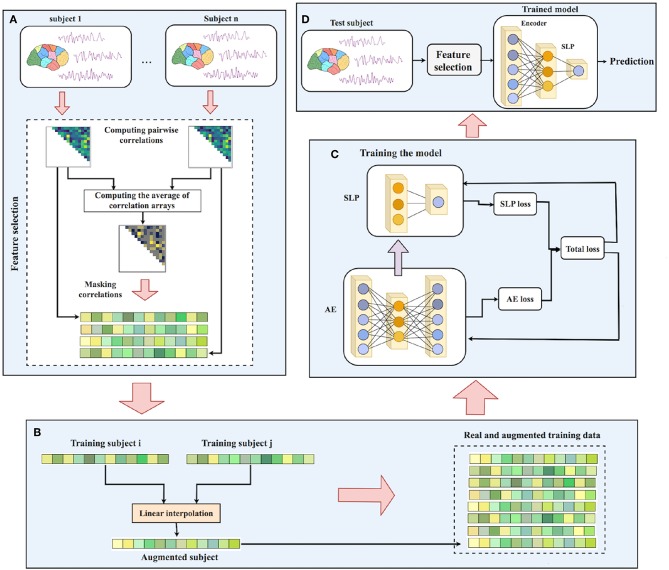Figure 3.
Workflow of ASD-DiagNet: (A) Pairwise Pearson's correlations for each subject in the training set is computed. The average of all correlation arrays is computed and the position of 1/4 largest and 1/4 smallest values in the average array is considered as a mask. Masked correlation array of each sample is considered as its feature vectors. (B) A set of artificial samples is generated using the feature vectors of training samples. (C) Autoencoder and SLP are jointly trained by adding up their training loss in each iteration. (D) For a test subject, the features are extracted using the mask generated in part A, followed by passing the features through the encoder part of the autoencoder, and finally predicting its label using the trained SLP.

